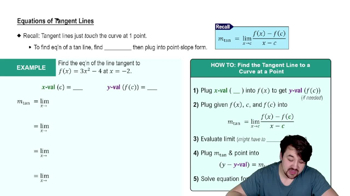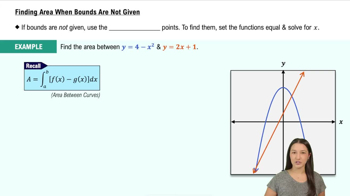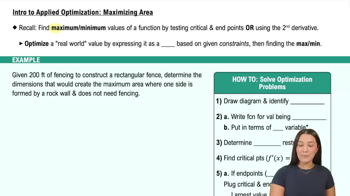Particle motion The positions of two particles on the s-axis are s₁ = cos t and s₂ = cos (t + π/4) .
b. When do the particles collide?
 Verified step by step guidance
Verified step by step guidance Verified video answer for a similar problem:
Verified video answer for a similar problem:



 1:13m
1:13mMaster Intro to Applied Optimization: Maximizing Area with a bite sized video explanation from Patrick
Start learning